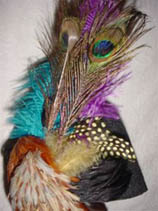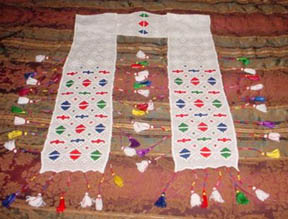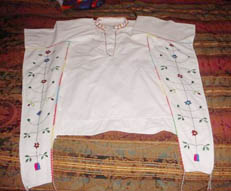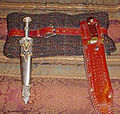 |
 |
 |
|---|---|---|
 |
 |
 |
ASSYRIAN CLOTHESThe Assyrian artist applied conventional terms in his representation of clothing. Simplicity was always resorted to in depicting fashion details, so that we tend to believe that the original costumes were more complex than displayed by the sculptor. The artist took great pains in portraying the decorative patterns, which ornamented garments, but left to us a host of queries as regards fashion. It is difficult to know with exactitude what articles of clothing were worn in addition to outer garments—particularly those, which covered the shoulders, the limbs and the breast. Another feature overlooked by the Assyrian artist was the depiction of folds on dress. But there is no doubt that the Assyrian costumes represent a development from those of Babylonia. |
MATERIAL OF CLOTHINGThe most common material for clothing was wool, although linen had been known from an early period and was often used for better-quality garments. Cotton did not become available until Sennacherib introduced it into Assyria in about 700 BC, from which time it was used for the making of cloth. Other materials sometimes used were leather and papyrus. The skins and furs of animals and metal were also in use, but chiefly for military and hunting costume |
THE DIFFERENCE IN MEN AND WOMEN CLOTHINGThe representations of costume which Assyrian art has left us are almost entirely those of men’s dress. Two examples of women’s dresses are shown here. The first wears a plain ungirded tunic and a simply draped shawl covering the figure partially. The second is a dress of a Queen, and has the tunic almost entirely covered with a voluminous shawl. The wide belt with narrow belt over it seems to be confined to the men’s costume, as also the tighter and scantier shawl draperies, which exist in singular variety. |
 |
 |
 |
|---|---|---|
 |
 |
 |